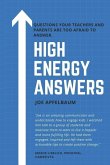Electricity is an essential part of modern society. Without it, our economies would collapse. But few people know about electrical energy facts. These are some interesting electrical energy facts you should know. In this book, we'll review some of the most important facts about electricity and its sources. You'll also learn how electricity is produced. So, what are some of these facts? Read on to find out! And don't forget to share these facts with your friends and family. Voltage is the force required to move electrons from one electrode to the other. The higher the voltage, the stronger the current. A single spark of electricity measures about 3,000 volts. Lightning, on the other hand, can be as high as three million volts. It's also important to understand that a single bolt of lightning can contain enough energy to light 100 bulbs for 24 hours or to toast thousands of bread. Electricity was discovered in around 1600 A.D. by William Gilbert, who studied electricity and magnetism and invented the term. Electrical energy is measured in watts or megawatts. A watt is the amount of energy needed to operate a gadget. A megawatt is equal to a million watts. Electricity comes in two forms, alternating current and direct current. Direct current is energy that flows in a straight line while alternating current changes direction periodically. Both forms of electricity are widely used in homes. And it's no wonder that heating and cooling expenditures make up half of a typical American's energy bill.








